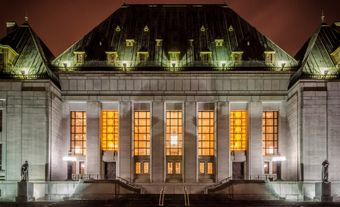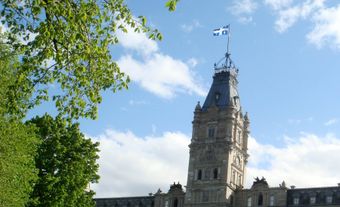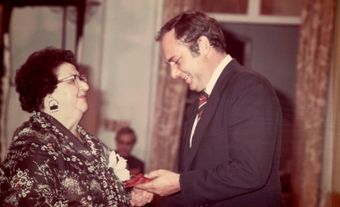Asia-Canada
The Asia-Canada timeline presented here is a chronological record of over 200 years of history since the first Chinese settlers helped build a trading post in Nootka Sound. The timeline touches on the settlement history of various Asian groups, the discrimination that many suffered in our early history, accomplishments, firsts, biographies, and the gradual changes through which Canadian society came to accept the rights and equality of its Asian immigrants.

-
January 01, 1788
Asia-Canada
First Chinese Settlers
The first Chinese to settle in Canada were 50 artisans who accompanied Captain John Meares in 1788 to help build a trading post and encourage trade in sea otter pelts between Guangzhou, China and Nootka Sound.
-
January 01, 1858
Asia-Canada
First Chinese Community in Canada
In 1858, Chinese immigrants began arriving from San Francisco as gold prospectors in the Fraser River valley, and Barkerville, BC, became the first Chinese community in Canada. By 1860, the Chinese population of Vancouver Island and BC was estimated to be 7,000.
-
May 01, 1872
Asia-Canada
Chinese Canadians Banned from Voting in BC
The British Columbia legislative assembly passes a law banning Chinese Canadians from voting. Previously, Chinese Canadian men could vote in provincial elections.
-
January 01, 1877
Asia-Canada
Manzo Nagano Settles in Victoria
The first known immigrant from Japan, Manzo Nagano, settled in Victoria, BC. The first wave of Japanese immigrants, called Issei (first generation), arrived between 1877 and 1928. By 1914, 10,000 people of Japanese ancestry had settled permanently in Canada.
-
January 01, 1885
Asia-Canada
Electoral Franchise Act
The original draft of the Act gave federal voting rights to some women, but under the final legislation, only men can vote. The Act gives some Reserve First Nations with property qualifications the right to vote, but bars Chinese Canadians.
-
January 01, 1885
Asia-Canada
Chinese Head Tax
Chinese migrants were obligated to pay a $50 "entry" or "head" tax before being admitted into Canada. The Chinese were the only ethnic group required to pay a tax to enter Canada. By 1903, the head tax was increased to $500; the number of Chinese who paid the fee in the first fiscal year dropped from 4719 to 8.
-
January 01, 1885
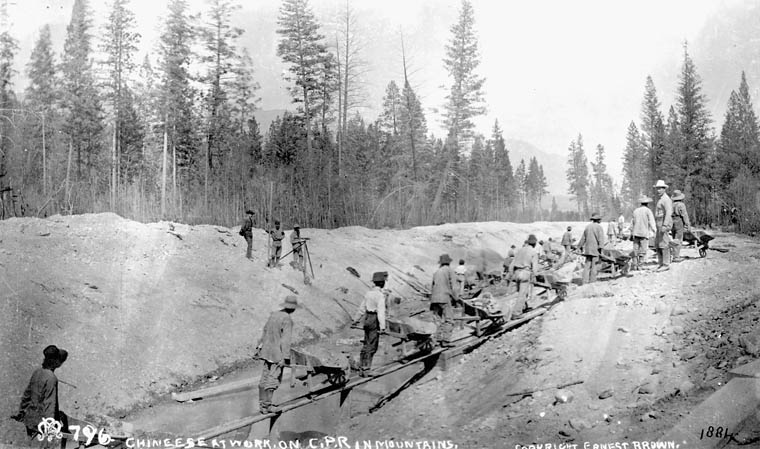
Asia-Canada
Chinese Labourers and the CPR
Some 15,000 Chinese labourers completed the British Columbia section of the CPR, with more than 600 of them perishing under adverse working conditions during this essential construction. Largely because of the trans-Canada railway, Chinese communities developed across the nation.
-
January 01, 1895
Asia-Canada
Japanese Canadians Lose the Right to Vote in BC
British Columbia amends the Provincial Voters’ Act to remove the right to vote from Japanese Canadians.
-
January 01, 1897
Asia-Canada
First Sikhs in Canada
The first Sikhs came to Canada at the turn of the 20th century. Some came to Canada as part of the Hong Kong military contingent en route to Queen Victoria's Diamond Jubilee (1897) and the coronation of Edward VII (1902), and returned to Canada to establish themselves in British Columbia. More than 5,000 South Asians, more than 90 per cent of them Sikhs, came to British Columbia before their immigration was banned in 1908.
-
June 13, 1898
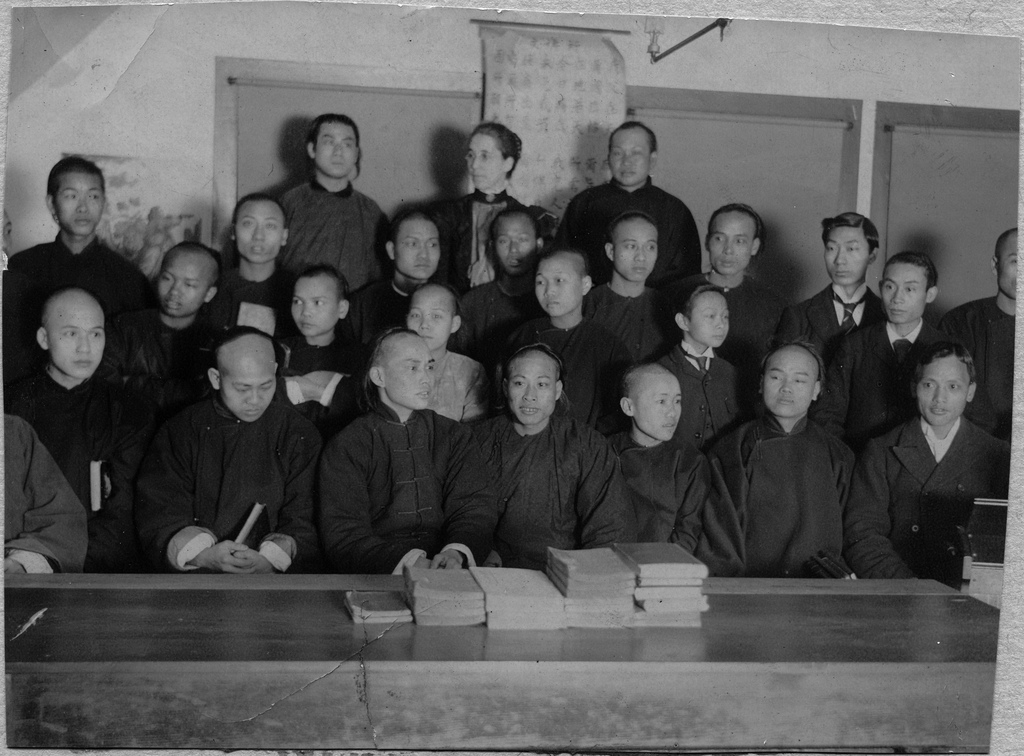
Asia-Canada
Federal Government Returns Determination of Voters to Provinces
Provinces are given the right to decide who can vote in provincial elections. Some exclude Chinese Canadians from voting provincially. However, federal legislation allows Chinese Canadians to vote in federal elections.
-
January 01, 1902
Asia-Canada
Royal Commission on Chinese and Japanese Immigration
The federal government appointed a Royal Commission on Chinese and Japanese Immigration, which concluded that the Asians were "unfit for full citizenship ... obnoxious to a free community and dangerous to the state."
-
January 01, 1903
Asia-Canada
Chinese Head Tax Increased to $500
After the 1903 session of Parliament passed legislation raising the head tax to $500, the number of Chinese who paid the fee in the first fiscal year dropped from 4,719 to 8.
-
January 20, 1904

Asia-Canada
Disallowance of Chinese Ban
The Canadian government disallowed a BC Act restricting Chinese immigration to that province.
-
October 01, 1906
Asia-Canada
The Suian Maru Voyagers
In October 1906, the Japanese vessel Suian Maru landed at Beecher Bay, on Vancouver Island. The group of 80 men and 3 women subsequently settled on Don and Lion islands near Richmond, BC. They worked in the fishing industry until the 1942 Japanese Internment. In October 2006, Richmond city council unveiled a plaque commemorating the Suian Maru voyagers.
-
January 01, 1907
Asia-Canada
BC Provincial Elections Act Amendment Act, 1907
British Columbia removes voting rights from anyone with origins in South Asia.
-
January 01, 1907
Asia-Canada
The Khalsa Diwan
The Vancouver Khalsa Diwan Society was created in 1907 and through its leadership, Sikhs built their first permanent temple or gurdwara ("gateway to the guru") the following year.
-
January 01, 1907
Asia-Canada
The Hayashi-Lemieux Gentlemen’s Agreement
In 1907, at Canada's insistence, Japan limited the migration of males to Canada to 400 per year. As a result, most immigrants thereafter were women joining their husbands or unmarried women who were betrothed to men in Canada.
-
January 01, 1907
Asia-Canada
South Asian Immigration Banned
An order-in-council banned immigration from India and South Asian countries. The population of South Asians in Canada would drop to roughly 2,000, the majority being Sikh. Though wives and children of legal Sikh residents were allowed entry to the country in the 1920s, it would not be until the late 1940s that the policies were changed to allow for full South Asian immigration to Canada.
-
September 07, 1907
Asia-Canada
Anti-Asian Riot
Several hundred people rioted through Vancouver's Asian district to protest Asian immigration to Canada. Discriminatory legislation and social practices in BC denied Chinese, Japanese and South Asians the right to vote, practise law or pharmacy, be elected to public office, serve on juries, or work in education or the civil service. Public opinion resulted on several occasions in violent anti-Asian riots.
-
January 01, 1908
Asia-Canada
Japanese Gardens in Canada
Isaburo Kishida, a noted professional gardener and park designer from Yokohama, designed four Japanese gardens in or near Victoria. Two are still extant; a rock garden in the Butchart Gardens, 1908, and the Japanese Garden at Hatley Park National Historic Site, originally created in 1909 and expanded in 1913.
-
May 23, 1914

Asia-Canada
The SS Komagata Maru Arrives in Vancouver Harbour
In 1914, 376 people from India aboard the immigrant ship Komagata Maru languished in Vancouver Harbour while Canadian authorities debated what to do with them. Two months later, on 23 July, Canada’s new navy, in action for the first time, escorted the ship from Canadian waters. Many Vancouver residents cheered approvingly from shore.
-
January 01, 1916
Asia-Canada
Japanese Canadians in the First World War
Although the federal government did not support the enlistment of first generation Japanese immigrants during the First World War, some Issei men persisted and in 1916, the first group was sent overseas. Of the 222 men who served, 54 were killed and 13 men received the Military Medal of Bravery.
-
January 01, 1919
Asia-Canada
Reduction of Japanese Fishing Licences
In 1919, Japanese Canadian fishermen controlled more than 3,200 fishing licences. The Department of Fisheries reduced the number of licences issued to people other than white residents, British subjects and First Nations. By 1925, Japanese fishermen would lose close to 1,000 licences.
-
July 01, 1920
Asia-Canada
Dominion Elections Act
The Dominion Elections Act enfranchised many of those who had been disenfranchised during the First World War, such as those originating from countries with which Canada had been at war. However, the Act stated that anyone who was disenfranchised by provincial legislation because of race would remain disenfranchised from the federal vote. This included persons of Chinese origin in Saskatchewan, and those of Indigenous, Chinese, Japanese, and South Asian origins in British Columbia.
-
January 01, 1923
Asia-Canada
Gentlemen’s Agreement Amendment
An amendment to the 1908 Hayashi-Lemieux agreement reduced the number of male Japanese immigrants to a maximum of 150 annually. In 1928, the Gentlemen’s Agreement was amended further to include women and children in the count of 150.
-
December 10, 1927
Asia-Canada
Birth of Margaret Jean Gee
Margaret Jean Gee was born in Vancouver, BC. In 1953, she became the first woman of Chinese descent to graduate in law at the University of British Columbia. The following year, she became the first Chinese Canadian woman in British Columbia to be called to the bar.
-
January 01, 1931
Asia-Canada
Japanese-Canadian WWI Veterans in BC Granted Right to Vote
Veterans of the First World War in British Columbia become the first Japanese Canadians granted the right to vote in federal or provincial elections.
-
January 01, 1931
Asia-Canada
Japanese Canadian Veterans Given Right to Vote
The federal government granted the franchise to Japanese Canadian veterans of the First World War. They were the first Japanese Canadians given the right to vote.
-
May 29, 1933
Asia-Canada
Chinese Soccer Team Wins Mainland Cup
The Chinese Students Soccer Team of Vancouver, BC, won the prestigious Mainland Cup, indicative of Lower Mainland soccer supremacy. They became heroes for the long suffering Chinese Canadian community, which experienced severe institutional racism and economic depression. In September 2011, the team was inducted into the BC Sports Hall of Fame and Museum.
-
January 01, 1936
Asia-Canada
Japanese Canadians Request Franchise
A delegation of Japanese Canadians travelled to Ottawa to speak before the Special Committee on Elections and Franchise Acts. Despite their presentation, the federal government upheld the denial of the franchise.
-
January 01, 1939
Asia-Canada
Japanese Canadians and the Second World War
Despite Canadian citizenship, Japanese Canadians were excluded from military service. Several second generation (Nisei) Japanese fought to enlist before and during the Second World War; however, only 32 Nisei (most of whom lived outside of BC) were allowed to enlist in regular service. In 1945, an additional 119 Nisei men, most of whom had been expelled from their homes in BC and whose families were in detention sites, enlisted in the Canadian Intelligence Corps.
-
March 01, 1941
Asia-Canada
Compulsory Registration
Everyone of Japanese descent over 16 years old was required by the Royal Canadian Mounted Police to register.
-
December 07, 1941
Asia-Canada
Japan Attacks Pearl Harbor
Immediately following the Japanese attack on Pearl Harbor on 7 December 1941, 38 Japanese Canadians were arrested as subversives. Twelve weeks after the attack, the federal government used the War Measures Act to order the removal of all Japanese Canadians residing within 160 km of the Pacific Coast. About 21,000 Japanese Canadians in BC, more than 75 per cent of whom were Canadian citizens, were fingerprinted, issued identification cards and removed from their homes. More than 8,000 were moved to a temporary detention camp (where women and children were held in a livestock building) at the Pacific National Exhibition in Vancouver. (See Japanese Canadians Held at Hastings Park.)
-
January 01, 1943
Asia-Canada
Japanese Property Sold
Between 1943 and 1946, the federal government sold all Japanese Canadian-owned property — homes, farms, fishing boats, businesses and personal property — and deducted from the proceeds any social assistance received by the owner while confined and unemployed in a detention camp.
-
March 14, 1944
Asia-Canada
Ontario Passes Racial Discrimination Act
Ontario was the first province to respond to social change when it passed the Racial Discrimination Act of 1944. This landmark legislation effectively prohibited the publication and display of any symbol, sign, or notice that expressed ethnic, racial, or religious discrimination. It was followed by other sweeping legislation.
-
January 01, 1945
Asia-Canada
Immigration and Labour Demand
At war's end, Canadian immigration regulations remained unchanged from the restrictive prewar years. But with a great demand for labour, Canada gradually re-opened its doors to European immigration; first to immigrants Canada traditionally preferred — those from the United Kingdom and Western Europe — but eventually to the rest of Europe as well. Immigration from Eastern Europe came to a halt, however, as borders to the west were closed by the Soviet Union and its Cold War allies.
-
January 01, 1946
Asia-Canada
Protest against Deportation of Japanese Canadians
In 1946, after the war was over, the government attempted to deport 10,000 Japanese Canadians to Japan but was stopped by a massive public protest from all parts of Canada. Nevertheless, 4,000 Japanese Canadians, more than half of whom were Canadian citizens, were deported to Japan.
-
January 01, 1947
Asia-Canada
Chinese and South Asian Canadians Gain Right to Vote Federally and Provincially
The Citizenship Act extended the right to vote federally and provincially to Chinese Canadian and South Asian Canadian men and women. However, it ignored Indigenous peoples and Japanese Canadians.
-
January 01, 1947
Asia-Canada
Canadian Citizenship Act and repeal of Chinese Immigration Act
Changes to federal legislation allow Chinese and South Asian Canadians to vote. However, it isn’t until 1951 that the final restrictions are lifted in provincial elections Canada-wide.
-
January 01, 1949
.png)
Asia-Canada
Japanese Canadians Win Right to Vote in BC
The last restriction on Japanese Canadians’ voting rights is lifted when British Columbia grants them the right to vote in provincial elections.
-
April 01, 1949
Asia-Canada
Japanese Canadians Enfranchised
Japanese Canadians were given the right to vote, and the legal restrictions used to control the movement of Japanese Canadians were removed. With their freedom reestablished, some moved back to British Columbia. But due to the hardships suffered, most Japanese Canadians who were expelled from the coast or deported did not return. With the extension of the federal franchise to Japanese Canadians, the last statutory disenfranchisement of Asians was removed.
-
January 01, 1967
Asia-Canada
Second Wave of Japanese Immigration
The second wave of Japanese immigration began in 1967 as a result of the “points system.” Many Japanese immigrants who came to Canada during this period worked in the service or skilled trades sectors.
-
October 01, 1967
Asia-Canada
Immigration "Points System" Introduced
Prior to 1967, the immigration system relied largely on immigration officers' judgment to determine who should be eligible to enter Canada. Deputy Minister of Immigration Tom Kent established a points system, which assigned points in nine categories, to determine eligibility.
-
January 01, 1971
Asia-Canada
Majority of Immigrants Non-European
The last vestiges of racial discrimination in immigration were gone from Canadian immigration legislation and regulations by the late 1960s. This opened Canada's doors to many of those who would previously have been rejected as “undesirable.” In 1971, for the first time in Canadian history, the majority of those immigrating into Canada were of non-European ancestry.
-
October 01, 1971
Asia-Canada
Trudeau Introduces Canada's Multicultural Policy
Canada's multiculturalism policy grew partly in reaction to the Royal Commission on Bilingualism and Biculturalism, which endorsed a "bicultural Canada," barely recognizing "other ethnic groups." This dilemma was partially resolved in 1971 by Prime Minister Trudeau's assertion that Canada was a "multicultural country with two official languages."
-
April 30, 1975

Asia-Canada
Fall of Saigon
The Vietnam War ended with the fall of Saigon, the capital of South Vietnam, to Communist forces. In the years that followed, many refugees risked their lives to escape the turbulent political context, human rights violations and rapidly deteriorating living conditions in Vietnam, Cambodia and Laos. By 1985, Canada had admitted more than 98,000 refugees from these countries.
Since 2015, 30 April has been designated Journey to Freedom Day in commemoration of the perilous journey undertaken by Vietnamese refugees.
-
January 01, 1978
Asia-Canada
New Immigration Act and Refugees
In 1978, Canada enacted a new Immigration Act that affirmed Canada's commitment to the resettlement of refugees from oppression. Refugees would no longer be admitted to Canada as an exception to immigration regulations. Admission of refugees was now part of Canadian immigration law and regulations.
-
November 01, 1978
Asia-Canada
The Hai Hong
In 1978, Canada accepted 604 refugees from the freighter Hai Hong. The situation of the "boat" people and of Lao, Khmer and Vietnamese "land people" who fled to Thailand grew increasingly severe, and in response Canada took in 59,970 refugee and designated-class immigrants during the next two years.
-
September 30, 1979
Asia-Canada
W5’s "Campus Giveaway"
CTV’s W5 program made the allegation that foreign students were taking the place of white Canadians in such career-related university programs as pharmacy, engineering and medicine. Since the "foreign faces" in the report were Chinese,W5's implication was that all students of Chinese origin were foreigners, and that Canadian taxpayers were subsidizing Chinese students — in spite of the fact that almost all of the identified students were Canadian citizens. Sixteen anti-W5 committees from Victoria to Halifax mobilized the Chinese population and secured a vague apology from CTV.
-
January 01, 1980
Asia-Canada
Illegally Stranded Refugees
The refugee issue was dramatically brought home to Canadians in the late 1980s, when two ships illegally stranded Sikh and Tamil refugee claimants on Canada's East Coast. Amid greatly exaggerated fears that Canada was about to be flooded with refugees, Parliament and immigration authorities began tightening up refugee regulations and procedures.
-
January 01, 1980
Asia-Canada
Southeast Asian Refugees
The first major refugee resettlement program under the new immigration legislation of 1978 came during the early 1980s, when Canada led the Western world in its welcome to Southeast Asian refugees and particularly those from Vietnam, often referred to as the "boat people." Many had escaped Vietnam in tiny boats and found themselves confined to refugee camps in Thailand or Hong Kong awaiting permanent homes.
-
January 01, 1981
Asia-Canada
Joy Kagawa’s Obasan Published
In 1981, Joy Kogawa’s Obasan, the first novel to trace the internment and dispersal of 20,000 Japanese Canadians from the West Coast during the Second World War is published. Kogawa was made a member of the Order of Canada in 1986. In 2006, her family's original Vancouver home was purchased by the Land Conservancy of British Columbia, and saved from imminent demolition, a testament to the significance of Kogawa's work for the history and culture of British Columbia.
-
November 17, 1981
Asia-Canada
Conrado Santos became the First Filipino Elected
Conrado Santos became the first Filipino to be elected to office when he was elected to the Manitoba Assembly for the New Democratic Party.
-
December 19, 1984
Asia-Canada
Hong Kong Invests in Vancouver
The signing of the Chinese-British Joint Declaration mandating the return of Hong Kong to China in 1997 began to cause a flow of Hong Kong capital and immigration into Vancouver.
-
January 01, 1985
Asia-Canada
Canada's New Immigration Policy
Canada changed its immigration policy to expand the list of business immigrants to include investors, entrepreneurs and those who are self-employed. This led to increased immigration from Hong Kong where people had begun to leave after Britain agreed to transfer its colony to China in 1997, and to a lesser extent from Taiwan.
-
April 04, 1985
Asia-Canada
Singh Case
In the Singh Case, the Supreme Court of Canada concluded that a refugee has the right not to "be removed from Canada to a country where his life or his freedom would be threatened."
-
August 11, 1986
Asia-Canada
Sri Lankan Migrants Rescued Off Newfoundland
Canadian fishing boats rescued over 150 Sri Lankan refugees off St. Shott’s, NL. The refugees were left in international waters by a smuggler. Without water, food or fuel, the refugees drifted for three days before being spotted. The rescue sparked a debate over how Canada approaches refugees, with some accusing the group of making false claims. In response to a string of similar events, the Mulroney government initiated a reform of the refugee system in 1988.
-
October 06, 1986

Asia-Canada
UNHCR Nansen Refugee Award to the people of Canada
The United Nations awards the people of Canada the Nansen Refugee Award "in recognition of their essential and constant contribution to the cause of refugees within their country and around the world”. Between 1979 and 1981, Canada had accepted more than 60,000 refugees from Vietnam, Cambodge and Laos, many of whom were sponsored by Canadian families and private organizations. It was the first and only time the award was presented to an entire nation.
-
January 01, 1988
Asia-Canada
Chan Hon Goh
In 1988, Chan Hon Goh became the first Canadian to win a silver medal at the prestigious Adeline Genée International Ballet competition in England.
-
January 01, 1988
Asia-Canada
Hong Kong Immigrants
Between 1988 and 1993, 166,487 Hong Kong immigrants settled in Canada, with Ontario (50.57 per cent) and BC (26.7 per cent) receiving the bulk of these new Canadians; by 2001, 82 per cent of people of Chinese origin lived in one of these two provinces.
-
September 22, 1988
Asia-Canada
Redress to Japanese Canadians
Prime Minister Brian Mulroney acknowledged the wartime wrongs committed against Japanese Canadians and announced compensation for each individual who had been expelled from the coast, was born before 1 April 1949 and was alive at the time of the signing of the agreement. The compensation also provided a community fund to rebuild the infrastructure of the destroyed communities, pardons for those wrongfully convicted of disobeying orders under the War Measures Act, Canadian citizenship for those wrongfully deported to Japan and their descendants and funding for a Canadian Race Relations Foundation.
-
November 08, 1988

Asia-Canada
Ondaatje and the Order of Canada
Author Michael Ondaatje was invested as an Officer of the Order of Canada. The Sri Lankan-born highly acclaimed author emigrated from Sri Lanka and came to Canada through England in 1962. He became a Canadian citizen in 1965. Perhaps his most well-known work, The English Patient (1992) was awarded the Governor General's Award for fiction in 1992, and earned Ondaatje a share of the prestigious Booker Prize, the first ever awarded to a Canadian. A 1996 film version of the novel won nine Academy Awards.
-
November 21, 1988
Asia-Canada
Dr. Rey D. Pagtakhan Elected MP
Dr. Rey D. Pagtakhan, a Liberal from Manitoba, became the first elected Filipino Member of Parliament.
-
July 01, 1997
Asia-Canada
Hong Kong Handover
After 156 years as a British colony, Hong Kong was returned to China. Many people left Hong Kong in the years leading up to the transfer. Canada, with the main destinations being Toronto and Vancouver, saw increased immigration in the mid 1980s and early 1990s. Unlike earlier Chinese immigrants, those from Hong Kong were educated and generally wealthy.
-
September 17, 1998
Asia-Canada
Vivienne Poy Appointed to the Senate
Vivienne Poy became the first Canadian of Asian descent to be appointed to the Senate. A historian, entrepreneur and fashion designer, Poy sponsored the Famous Five monument in Calgary and was instrumental in the designation of May as Asian Heritage Month.
-
October 07, 1999
Asia-Canada
Adrienne Clarkson Sworn in as Governor General
Adrienne Clarkson took office as Canada’s governor general. Prime Minister Jean Chrétien’s appointment of Clarkson marked several "firsts" in the selection of Canada's governor general: she was the first without a military background and the first non-white Canadian to be appointed to the vice-regal position.
-
January 01, 2001
Asia-Canada
Religious Tolerance and the Kirpan
In 2001, the Supreme Court of Canada ruled that a Québec student had the right to wear a kirpan while in school. The Québec Court of Appeal struck down the decision in 2004, ruling that community safety was more important than wearing the ceremonial dagger, but in 2006 the Supreme Court again decided that religious tolerance was to be encouraged in Canadian society and that a total ban infringed on the guarantee of religious freedom under the Charter of Rights.
-
June 28, 2004
Asia-Canada
Bev Oda Elected to Parliament
Bev Oda became the first Japanese Canadian Member of Parliament, when she was elected as the representative for Durham, Ontario.
-
December 26, 2004
Asia-Canada
Earthquake and Tsunami in the Indian Ocean
A giant earthquake struck about 150 kilometres off the west coast of northern Sumatra Island (Indonesia) generating a catastrophic tsunami that caused devastation in eleven countries around the Indian Ocean. The tsunami waves killed people more than 2,000 kilometers away, as far as the Seychelles and Somalia By February 2005, the global death toll was estimated as 226,566, with many unreported deaths. The Government of Canada donated some $425 million to relief and reconstruction in the affected region.
-
January 01, 2005
Asia-Canada
Deepa Mehta’s Water
Filmmaker Deepa Mehta released the final film of her elements trilogy with 2005’s Water. The story of socially marginalized widows who are ostracized in conservative parts of India went through a series of delays as violent protesters threatened Mehta's life and destroyed film sets in the holy city of Varanasi, where "widow houses" can still be found.
-
January 20, 2005

Asia-Canada
Norman Kwong Becomes Lieutenant Governor
Norman Kwong succeeded Lois Hole as Alberta's 16th lieutenant governor, the first Chinese Canadian to hold the position in Alberta.
-
April 12, 2005

Asia-Canada
Chinese Begin Investing in Alberta’s Oil Sands
China National Offshore Oil Corp (or CNOOC) is the first Chinese company to invest in Alberta’s oil sands with the purchase of a 16.7 per cent share of MEG Energy Corp. China's two other state-controlled oil companies, PetroChina and Sinopec, would also purchase shares in other oil sand companies by 2009.
-
February 03, 2006

Asia-Canada
Suzuki named Companion of the Order of Canada
Geneticist and broadcaster David Suzuki was promoted to Companion of the Order of Canada. He was named an Officer of the Order in 1977. Suzuki has won multiple awards for his work in both science and broadcasting, where he has raised public awareness on important environmental issues.
-
June 22, 2006
Asia-Canada
Chinese Head Tax Apology
Under much community pressure, Prime Minister Stephen Harper offered an apology to the Chinese community for the implementation of the head tax, which had been originally introduced in 1885. An official directive made in Parliament ordered compensation for the head tax of approximately $20,000 to be paid to survivors or their spouses.
-
September 17, 2007
Asia-Canada
Ève-Mary Thaï Thi Lac Elected
Ève-Mary Thaï Thi Lac became the first Canadian of Vietnamese origin elected to the House of Commons, representing Saint-Hyacinthe–Bagot, Québec, for the Bloc Québécois.
-
November 05, 2009
Asia-Canada
Moriyama Invested as a Companion of the Order of Canada
Architect Raymond Moriyama was invested as a Companion of the Order of Canada. He was made an Officer of the Order of Canada in 1985. He won the Governor General’s Medal for Architecture in 1977 and 1984.
-
April 12, 2010

Asia-Canada
Chinese Oil Producer Buys Shares in Syncrude
Sinopec Corp, China's second-largest oil producer, paid $4.65 billion for a 9.03 per cent share of Syncrude. The purchase more than doubled that country’s presence in Alberta's oil sands since its companies began investing there in 2005.
-
August 13, 2010
Asia-Canada
Tamil Refugees in Victoria
A Thai registered cargo ship with as many as 500 Tamils on board arrived in Canadian waters. The MV Sun Sea was intercepted by armed Canadian military vessels. Health and security officials boarded the ship in Victoria, BC, and the passengers given medical check-ups. They were then moved to detention centres in the Vancouver area to await processing of their refugee claims.
-
March 11, 2011
Asia-Canada
Earthquake and Tsunami in Japan
A massive earthquake caused a catastrophic tsunami to strike the coast of Japan causing devastation in the coastal towns, tens of thousands of deaths and a lingering nuclear crisis.
-
November 06, 2014

Asia-Canada
Farhan Zaidi Makes History as MLB General Manager
Farhan Zaidi was hired as the general manager of the Los Angeles Dodgers, making him Major League Baseball’s first Muslim and first South Asian general manager. He also became only the second Muslim executive in MLB and only the sixth general manager from Canada. Born in Sudbury and raised in the Philippines, Zaidi left the Dodgers in 2018 to join the San Francisco Giants. He was named MLB Executive of the Year in 2021 after the Giants finished first overall with 107 wins — the most in franchise history.
-
April 23, 2015

Asia-Canada
Journey to Freedom Day Act
The Parliament of Canada passed the Journey to Freedom Day Act, establishing 30 April as a national day of commemoration of the exodus of Vietnamese refugees and their acceptance in Canada after the fall of Saigon and the end of the Vietnam War.
-
May 18, 2016
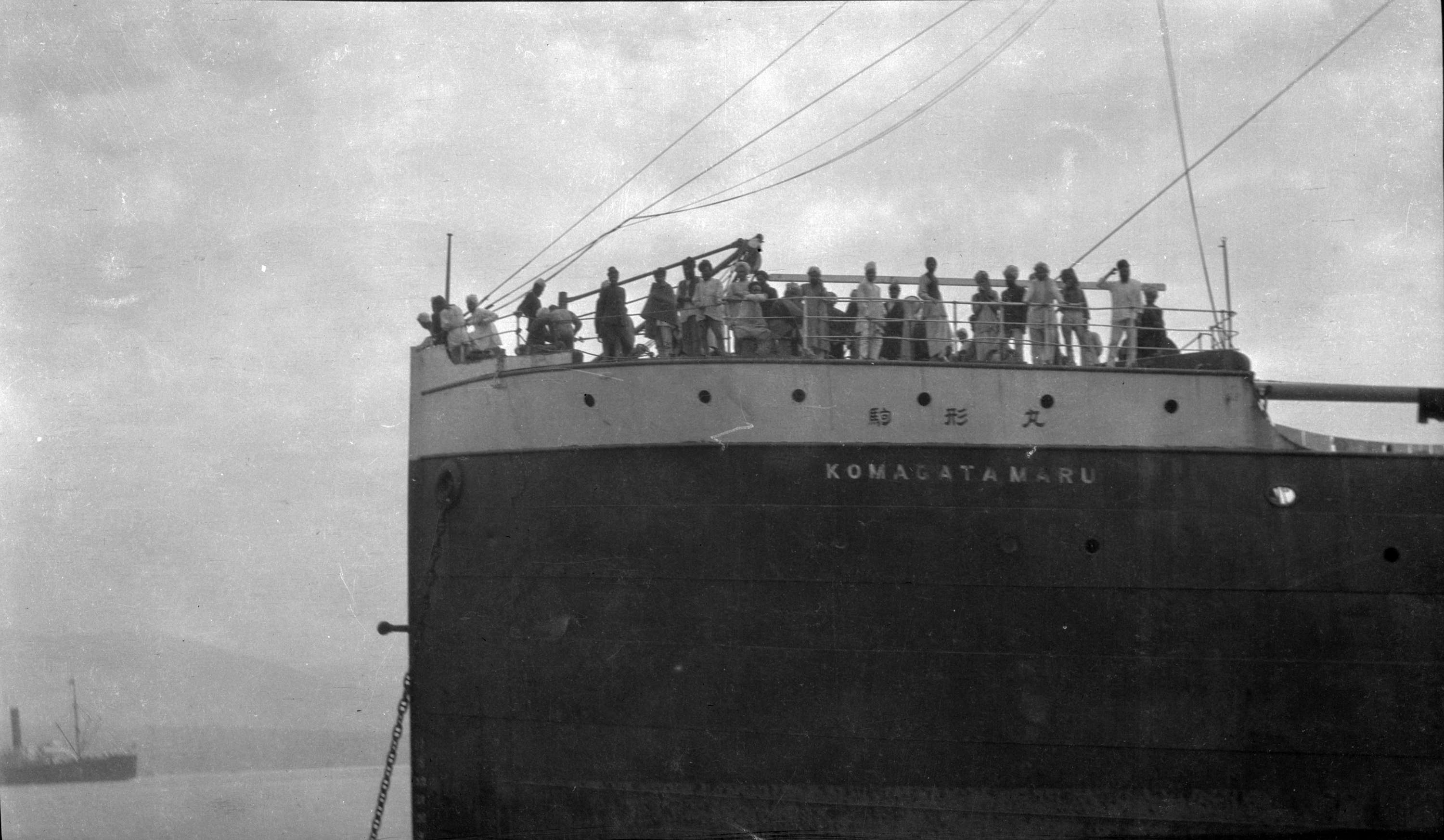
Asia-Canada
Formal Apology for the Komagata Maru Incident
Prime Minister Justin Trudeau formally apologized for the Komagata Maru incident before the House of Commons. In 1914, a chartered ship carrying Punjabis who sought a better life in Canada was denied entry at the Port of Vancouver. A dramatic challenge to Canada’s former practice of excluding immigrants from India ensued. The passengers were finally turned away after a long legal ordeal, only to face a deadly conflict with police upon their return to India.
-
September 03, 2016

Asia-Canada
Death of Norman Kwong
Norman “Normie” Kwong made history as the first Chinese Canadian to play in the Canadian Football League, the youngest player to win the Grey Cup, and the first Chinese Canadian lieutenant-governor of Alberta. He died in Calgary at the age of 86.
-
July 01, 2021
Asia-Canada
First South Asian Canadian to Sit on Supreme Court
Mahmud Jamal became the first racialized person and the first South Asian Canadian to serve as a justice on the Supreme Court of Canada. A former Fulbright scholar with a background in law and economics, Jamal worked as a litigator with the Toronto firm Osler, Hoskin & Harcourt LLP before becoming a judge with the Court of Appeal for Ontario.


